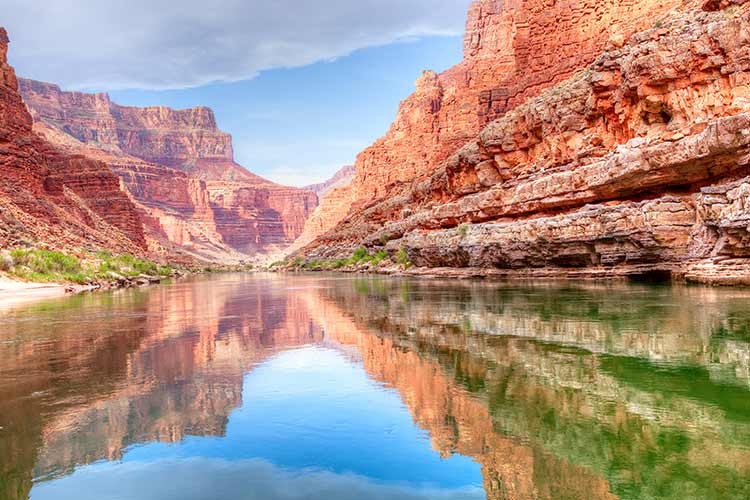
The steep canyon walls of the Grand Canyon reflect off of the Colorado River. The Colorado River’s landscape is not only striking in its beauty, it also holds clues about the distant past, including when and how the course of the river was determined. However, the steep canyon walls and craggy outcroppings haven’t given up their secrets easily. Explorers, naturalists, and scientists have long been interested in how the Colorado River formed and how it came to flow along its current course. For more than a hundred and fifty years, geologists have been making observations and digging through rocky deposits to describe the formation of this natural marvel. However, geology can be a tricky field since many clues from the distant past have been scattered, buried, or lost over time. There have been conflicting observations about the river’s age, its ancient path, and even the direction in which it flowed many millions of years ago. 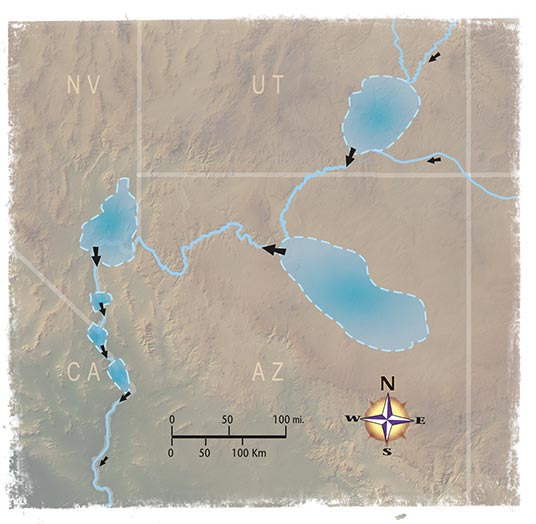
A geologiest named Eliot Blackwelder envisioned a string of lakes from the Rocky Mountains to the sea, along which the course of the Colorado River was formed through spillover. For instance, the upper portion of the river, where it passes through the state of Colorado, has been estimated to be more than 10 million years old. Yet a few hundred miles downstream, where it flows into Lake Mead, the river is far younger – less than six million years old. After sifting through sediment and examining layers of rock from the lower Colorado River, including areas at Lake Mead and Lake Mohave, geologists are getting closer to the truth about how this young stretch of the river may have formed. Up until about five million years ago, the ancestral Colorado River didn’t reach this far south. As time went by, its drainage area increased, although there’s no consensus on how this happened. What scientists have surmised, however, is that the river eventually reached a series of sometimes dry, sometimes wet basins in the Southwestern United States - including the spots where Lake Mead and Lake Mohave now sit. Over thousands of years, the water filled one basin and then spilled over into the next, like a series of bathtubs overflowing. This chain of basins formed the path of the lower Colorado River that we are familiar with today. Basin Spillover TheoryShown here is the sequential development of the lower Colorado River from basin spillover. 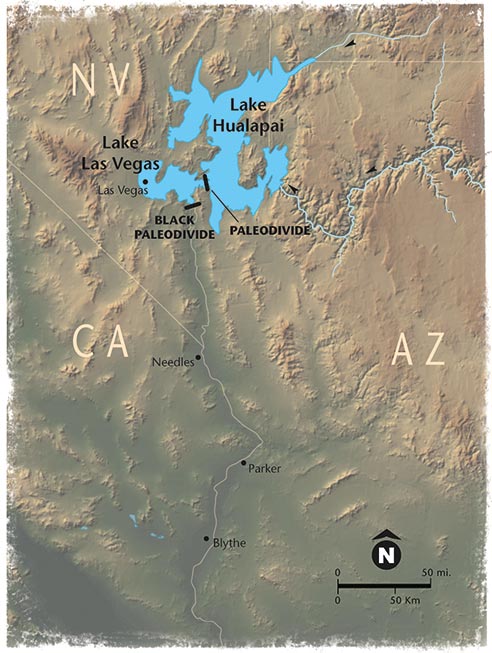
Lake Hualapai and Lake Las Vegas form as water reaches these basins. A paleodivide (shown in black) near present-day Hoover Dam confines the basin. 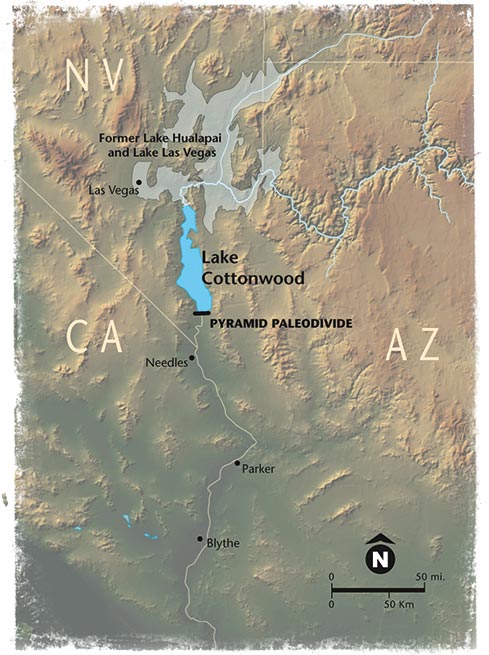
When the paleodivide is overtopped, the Cottonwood Basin fills, contained by the Pyramid paleodivide. 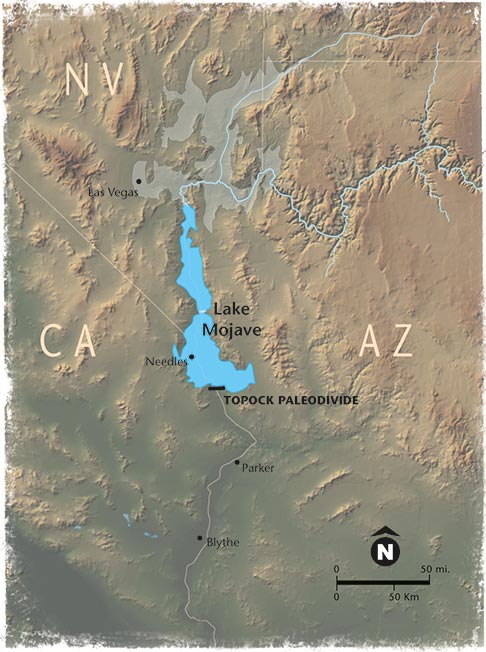
Next the Pyramid paleodivide is breached and Lake Mojave forms, drowning the former Lake Cottonwood. 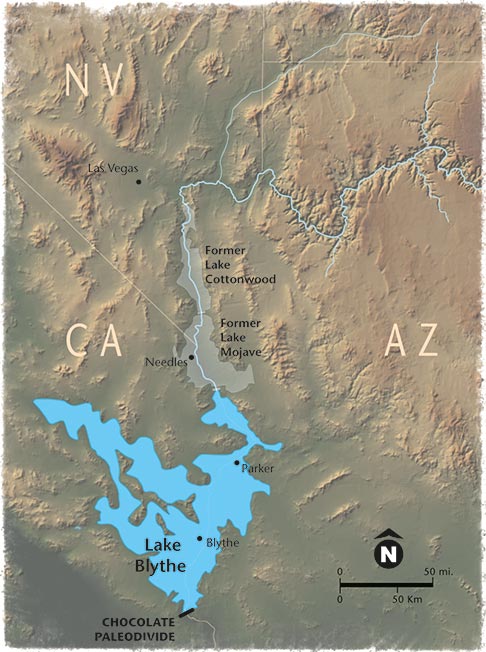
Finally the Topock paleodivide is eroded and Lake Blyth forms. 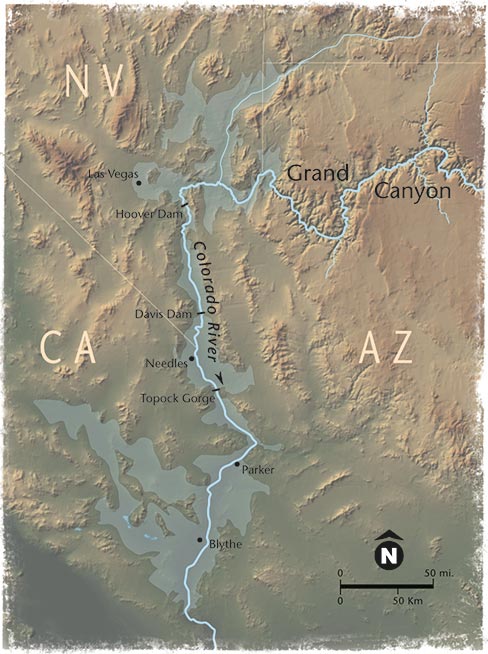
The course of the lower Colorado River is in place after all spillovers are complete. This theory, called Basin Spillover, was controversial when it was first suggested in the 1930’s but has gained support in recent years. Transformative ideas like this one have changed how geologists think about rivers like the Colorado, and how they can change over time. In other words, lakes Mead and Mohave are probably not the first lakes to have dotted the landscape in Southern Nevada. Even though the reservoirs as we currently know them are a product of the human-made dams along the Colorado River, these lakes echo nature’s own formations from millions of years ago. Copyright Notice: Map illustrations by Bronze Black are from the book Carving Grand Canyon: Evidence, Theories, and Mystery, Second Edition by Wayne Ranney, published by Grand Canyon Association ©2012. |
Last updated: April 5, 2017
